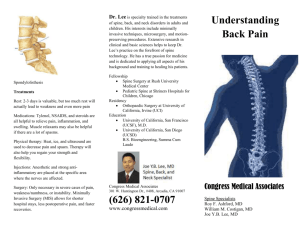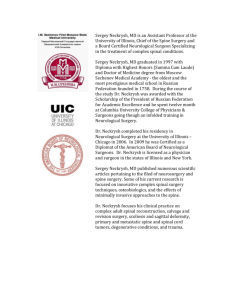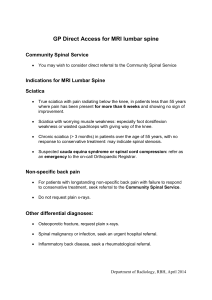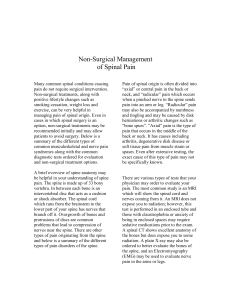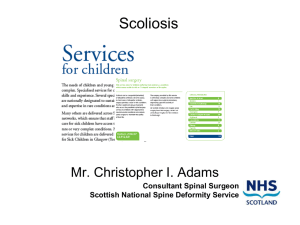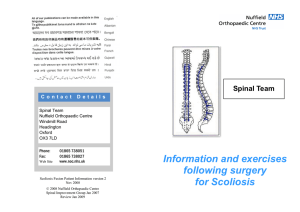Homework #2 - PHT 1228c Therapeutic Exercise II
advertisement
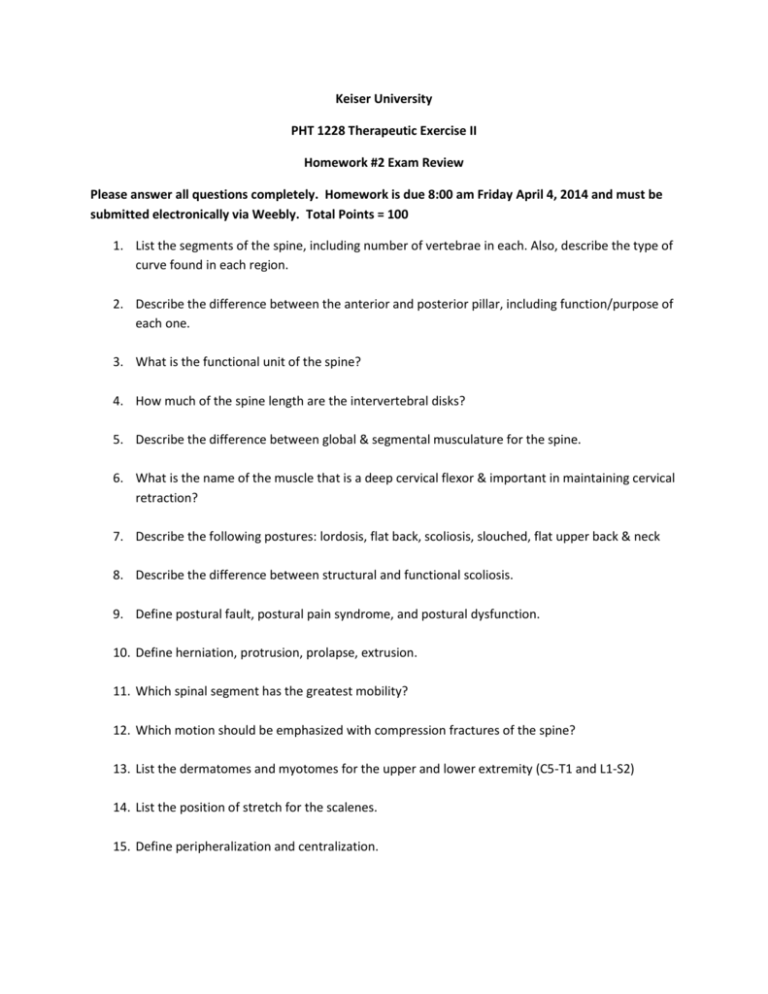
Keiser University PHT 1228 Therapeutic Exercise II Homework #2 Exam Review Please answer all questions completely. Homework is due 8:00 am Friday April 4, 2014 and must be submitted electronically via Weebly. Total Points = 100 1. List the segments of the spine, including number of vertebrae in each. Also, describe the type of curve found in each region. 2. Describe the difference between the anterior and posterior pillar, including function/purpose of each one. 3. What is the functional unit of the spine? 4. How much of the spine length are the intervertebral disks? 5. Describe the difference between global & segmental musculature for the spine. 6. What is the name of the muscle that is a deep cervical flexor & important in maintaining cervical retraction? 7. Describe the following postures: lordosis, flat back, scoliosis, slouched, flat upper back & neck 8. Describe the difference between structural and functional scoliosis. 9. Define postural fault, postural pain syndrome, and postural dysfunction. 10. Define herniation, protrusion, prolapse, extrusion. 11. Which spinal segment has the greatest mobility? 12. Which motion should be emphasized with compression fractures of the spine? 13. List the dermatomes and myotomes for the upper and lower extremity (C5-T1 and L1-S2) 14. List the position of stretch for the scalenes. 15. Define peripheralization and centralization. 16. List common spinal diagnoses that would fit into the following categories: extension bias, flexion bias, non-weight-bearing bias, stabilization, mobilization/manipulation. 17. What mainly determines the motions in each region of the spine? 18. List common areas of the spine for strain injuries. 19. List common treatment approaches for each of the spinal diagnostic categories, i.e. extension bias, flexion bias, non-weight-bearing bias. 20. Compare postures/positions and the amount of intervertebral disk pressure with each one. 21. List impairments common with facet joint pathology. 22. Why are disc problems more common in 30-45 year old age group? 23. List SI joint impairments and a treatment approach for each. 24. Describe kinesthetic awareness. 25. Compare drawing in, abdominal bracing, and posterior pelvic tilt. 26. Describe the spinal stabilization levels 1-6. 27. Describe the superman progression for back extensor stabilization training. 28. List one main motion treatment for spinal stenosis/degenerative joint disease. 29. List one exercise for stabilization of quadratus lumborum. 30. List one serious complication in the spine of rheumatoid arthritis. 31. How do you teach your patient to carry heavy objects? 32. How do you teach your patient the proper way to turn? 33. Define position of bias. 34. Your patient has L lumbar scoliosis. Describe the curve and which side is tight &/or weak. 35. Why are rhythmic stabilization exercises important for spinal rehabilitation? 36. List contraindication for treatment of osteoporosis. 37. Define Schuermann’s disease. 38. List the purpose/function of the intervertebral disc, including the 2 main components. 39. Describe the proper position of the plumb line in the lateral view. List the anatomical structures that maintain the body in that position at each joint/area. 40. Which spinal motion opens up the intervertebral foramen the most?

